Did you have time to keep up with the news this week? Here’s your chance to brag… or not. This week there are 11 questions. Good luck!
The post FOSS Force Mostly Open Tech News Quiz – March 28, 2025 appeared first on FOSS Force.

Did you have time to keep up with the news this week? Here’s your chance to brag… or not. This week there are 11 questions. Good luck!
The post FOSS Force Mostly Open Tech News Quiz – March 28, 2025 appeared first on FOSS Force.

In the market for over 100 hours of great RPG action? The latest Humble Bundle includes the perfect mix of games, and you can grab five of them for just $10.
Mushroom fans rejoice. Adult Swim has ordered a second season of its animated hit Common Side Effects. This is happening just ahead of the finale of the first season, which airs this weekend.
For the uninitiated, Common Side Effects is something of an odd duck. It’s a cartoon, but it’s more of a thriller than a comedy. Mike Judge (Silicon Valley, King of the Hill) and Greg Daniels (The Office, Parks and Recreation) are onboard as executive producers, so there are some jokes. I guess it could be called a dramedy, but comedic thriller seems more apt.
The plot follows two former high school lab partners who discover a mystical mushroom that can cure just about every disease. This forces them to go on the run from the DEA, big pharma and shadowy business entities. The animation style is certainly unique, and may not be for everyone, but the show really comes into its own after a few episodes.
The voice cast includes Mike Judge, who played both Beavis and Butt-Head, and Martha Kelly, who starred in the animated Carol & the End of the World. She’s also fantastic in Baskets and absolutely terrifying in the second season of Euphoria. The remaining cast includes Joseph Lee Anderson, Dave King and Emily Pendergast.
Along with the renewal announcement, Adult Swim president Michael Ouweleen called the show a “boundary-pushing and genre-defining piece of television.” He also praised fans for “lighting up socials to spread the word.”
Common Side Effects was created by Steve Hely, who wrote for American Dad and 30 Rock, and Joe Bennett, who made the criminally underrated (and now cancelled) Scavenger’s Reign. The pair said their goal for the show is “to transform planet Earth and restore the human spirit” but that they’ll “settle for a second season.”
This article originally appeared on Engadget at https://www.engadget.com/entertainment/tv-movies/common-side-effects-has-been-renewed-for-a-second-season-by-adult-swim-173256630.html?src=rss
When I reviewed the Kindle Colorsoft, one of my biggest points of criticism was how simple the tablet itself is. There’s no stylus support or page turn buttons, even though Amazon previously had buttons on the now discontinued Kindle Oasis, and competitors like the Kobo Libra Colour and Boox Go Color 7 are still using them. Until now, that meant that turning the page required you to physically touch the screen, potentially leaving behind a distracting fingerprint.
Personally, that’s not a major issue to me—I just tap the margins. But it’s a major distraction to my husband, who’s taken to reading all of his books on his Kobo instead. With its most recent Kindle update, though, Amazon has now introduced an alternative way to turn your page, albeit with some limitations.
As part of the 5.18.1 Kindle Software update, the Kindle Colorsoft and the 12th Generation Kindle Paperwhite Signature Edition now let you turn the page by double-tapping pretty much anywhere on the device itself, whether that’s the sides or the back. After updating, you’ll get a brief intro screen, and then you’re free to open a book and try it out. And don’t worry—tapping once on the screen instead still works.
It can be a bit tricky to get the timing down at first, but keeping the window for a double tap short also helps prevent accidental skips forward. It only took me a couple of minutes to land on a cadence that works every time, and I wouldn’t say double tapping requires too much force or is too uncomfortable. That said, I mostly tested it out on a novel. If you advance your pages more frequently than once every minute or so, I could see the gesture getting tiresome.
As for the downsides, double tapping only lets you move your page forward. There’s no double tapping to go back, which is a bit of a bummer. My guess is that the Kindle just doesn’t have the tech to differentiate between taps on the left side of the device vs. taps on the right side, so Amazon opted to map all double taps to moving forward a page instead. Still, you might have to retrain your muscle memory a little bit—using your left hand for this won’t suddenly make you start rewinding.
If you’re on your Kindle’s home screen, the double tap gesture will also scroll down slightly, which is a nice touch.
The 5.18.1 software update is available now, and you can theoretically access it under Settings > Device Options > Software updates. That said, my Kindle didn’t show it as an over-the-air update option, instead saying I was “on the latest software” when I was clearly still on version 5.18.0.01. If this happens to you, you can instead manually download the update to a computer through Amazon’s website, then transfer it to your Kindle using the instructions below.
Download the 5.18.1 software update for your device using the above link.
Turn on your Kindle.
Connect your Kindle to your computer (Amazon suggests using the included charging cable, but this wasn’t necessary for me).
Using your computer’s file manager app, drag and drop the software update to your Kindle. Note that, if you’re on Mac, you might need a separate app to actually see your device.
Tap “Disconnect” on your Kindle (or eject it from your computer) and unplug it from your cable.
Navigate to Settings > Device Options and tap Software Updates. Your Kindle will restart and apply the update.
With that, you should be all set. Your Kindle will show the double tap tutorial and automatically enable the feature. That said, if you do find yourself accidentally double tapping a little too much, you can toggle it off under Settings > Device Options > Double tap.

Part of the fun of role-playing games is changing things up and experimenting with unique builds, weapons, and spells. If you’re hoping to try a new build in AI Limit, there’s good news and bad news. The good news is that you absolutely can respec in the game. The bad news, though, is that you don’t unlock this…
The PCLinuxOS Magazine staff is pleased to announce the release of the April 2025 issue.
This is a video highlighting the ball-loving life of golden retriever Finley Molloy, who holds the Guinness World Record for most tennis balls held in a dog’s mouth, with a very respectable six. For reference, that’s six more than I can hold, and I’ve tried. Just getting one past my teeth is difficult, then when I do I immediately start to panic I won’t be able to get it back out. My parents have since hidden all the sports balls in the house, but I know they’re in the attic. I’m just not going up there because of the ghosts. They’re not the friendly kind like Casper, they want to inhabit my vessel!
We may earn a commission from links on this page.
Dutch ovens are heavy duty cast iron behemoths ready to take on your next cooking challenge whether it’s steamed, braised, boiled, or fried. But usually with that much power comes (you guessed it) a ridiculous price tag. It’s important to note, while Staub and Le Creuset can retail for $200 to $500, other brands are just as effective. Here are three good options—well below $100—on sale right now for Amazon’s Big Spring Sale.
I’m a fan of Lodge—I’ve had a 12-inch cast iron skillet that’s been a fabulous helper for nearly a decade—and their 3-quart Dutch oven has been deeply discounted. Normally this petite Lodge Dutch oven retails for over $100, but you can get it for $55.17. (Note that some of the different colors might come up at $60.)
While a 3-quart pot isn’t very large, you can still cook three to four servings of side dishes, stews, and soups in this size pot. Here are some of my favorite things to cook in my Dutch oven. This size is great for smaller storage situations, and considerably lighter if you’re not interested in hoisting a 15-pound hunk of metal onto your stove. This heavy duty piece of cookware can last a generation if you take care of it, and look snazzy while doing it.
Overmont. While I’m not familiar with Overmont, this Dutch oven is a good option if you’re looking for a larger pot. This highly rated Dutch oven is a 5.5-quart pot, which is better for baking loaves of bread or making six to eight servings of soups and stews. It’s also good for braising roasts or thick cuts of meat, and can withstand temperatures up to 500°F, moving seamlessly from stove top to oven for braising, or high-temperature bread baking. It’s $59.49 with a $5 coupon right now.
Lodge. If there’s a Lodge option for a bigger pot then I’m going to find it—and I have. This is their 6-quart Dutch oven on sale for $67.49. Granted, it’s a few bucks more expensive than the 3-quart above, but with that extra space you can do a whole lot more.
We’ve spotted Ethan Craik, one of the Scott Factory Downhill team’s top riders, ripping round BikePark Wales on what appears to be the latest iteration of the Scott Gambler.
Charging down the Welsh hillside as part of BikePark Wales’ Not A Race event, Craik wasn’t hanging about on the new Gambler.
It’s been six years since Scott updated the Gambler and this latest version looks to follow suit when it comes to the Swiss brand’s now preferred frame aesthetics.
With the rear shock now hidden within the frame – something Scott has done with the Spark XC bike, Genius trail bike and, more recently, the Ransom enduro bike – this Gambler is clearly a very different beast from the outgoing machine, which used a vertically mounted shock and four-bar linkage suspension system.
What else is new, though?
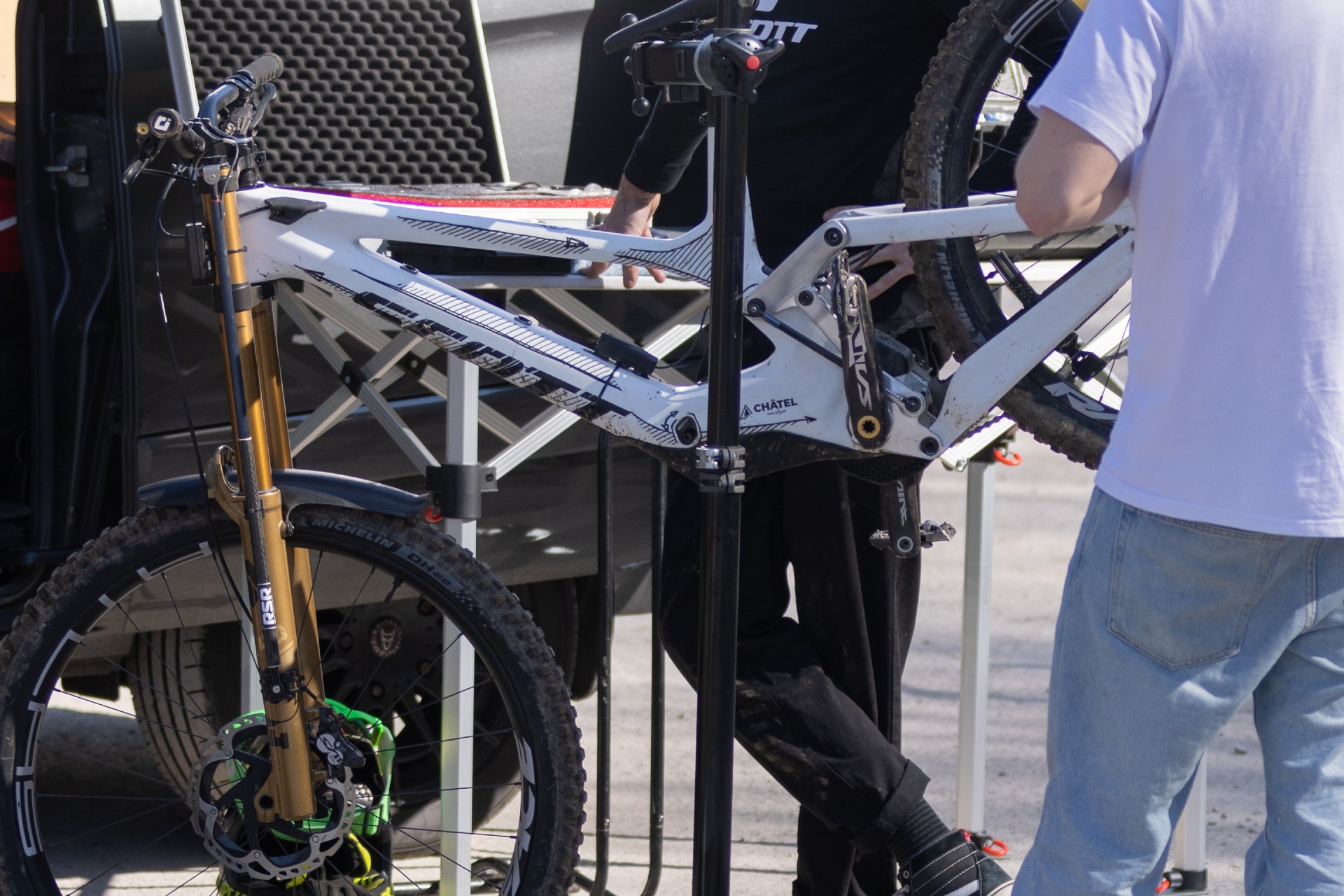
Scott hasn’t exactly been super-secretive in hiding the new Gambler, having had various team members posting riding clips aboard it on social media.
Craik and Benoît Coulanges also hit the first round of the Portuguese DH Cup on it earlier this month, finishing second and third respectively.
Scott will have been working on this bike for years, not just these past few months, but it’s not as if it had to start from scratch, given how the rest of the line-up has been updated in recent times.
The new Gambler appears to share similarities with the 170mm-travel Ransom, which houses the shock horizontally in the down tube, where it’s accessed via a bolt-on cover, just like the one we can see here on the Gambler.
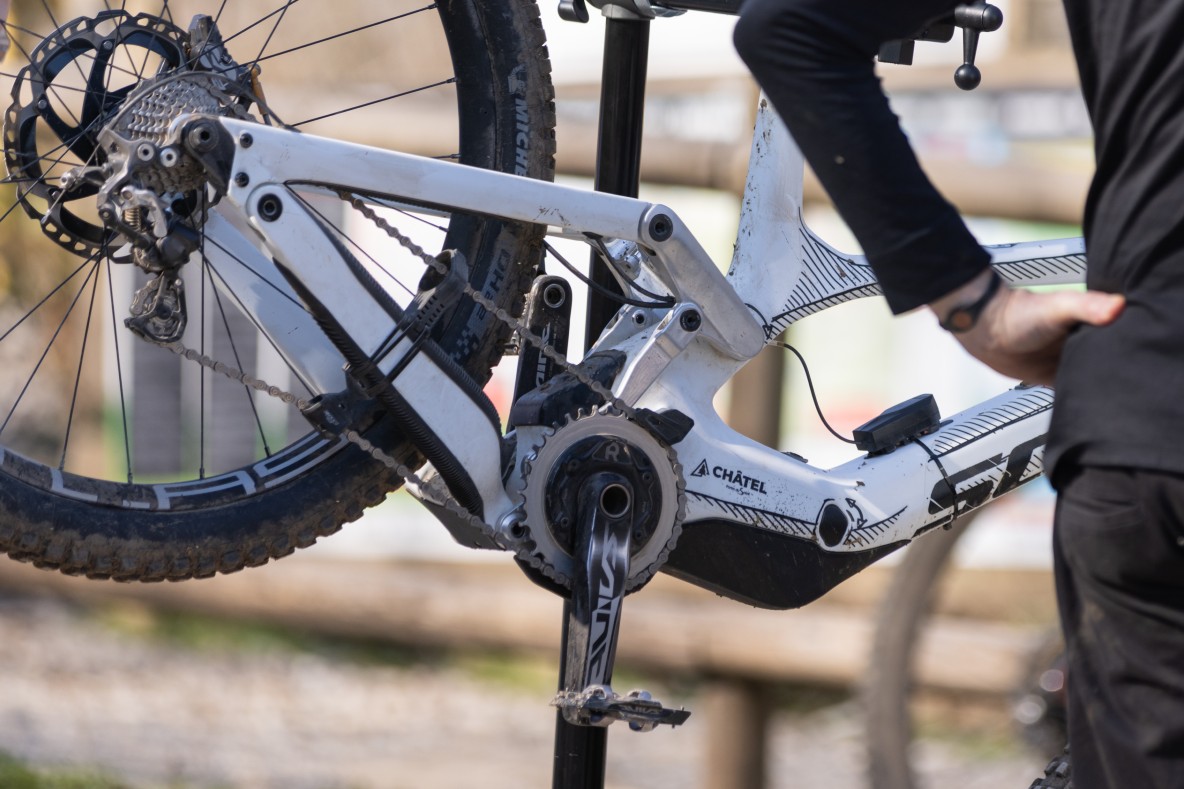
In terms of what’s driving the shock – again, from what can be seen, there are a lot of similarities to the six-bar system used on the Ransom.
What’s different here, though, is the forward shock bolt looks to offer some form of adjustment, thanks to the diamond-shaped chips locking them in place, unlike the standard shock bolt used on the Ransom frame.
We’d guess these could alter the level of progression available through the rear-suspension travel, although it’s hard to say for sure.
There appears to be more available to tweak on the Gambler, though.
On what looks to be a machined aluminium rocker link connecting the seatstays to the main frame – indicating that this is still a prototype and not quite ready for release – there seem to be bolt mounts on the inside for what we’d presume to be a removable brace.
Bolting a brace in here will likely boost rear-end stiffness – great if you’re a heavy, hard-hitting rider. Removing it will increase flexibility and most likely help to improve rear-wheel traction. It’ll also help to add some compliance for lighter riders.
On top of that, the rear axle dropouts appear to be bolted in place, suggesting these can be swapped out, most likely for different-length options to either accommodate different wheel sizes or tweak the length of the rear centre.
Take a look at the driveside chainstay and you’ll see the STFU chain-damping guide.
These guides have been placed above and below the chainstay. We’re guessing, in the battle to create the quietest bike at the 2025 races, this’ll help keep noise to a minimum.
There’s also the Rimpact Chain Damper, which replaces the regular chainring.
This nifty little device is used to reduce pedal kickback through the suspension system for a smoother ride feel.
Again, we’re sure this is all in a bid to create one of the smoothest, most comfortable bikes on the hillside.
We weren’t able to get an up-close bike check with Ethan Craik’s new Gambler at the event, because the bike still doesn’t officially exist, but, when we do get more details, we’ll be sure to let you know.
Facebook wants to be your friend again, by showing you what your real friends are up to. In an attempt to save itself from the AI slop and clickbaity images that are all over its algorithmic feed, Facebook is now updating its mobile app’s dedicated Friends tab to be a whole feed, showing you updates only from the real people that you actually care about. That’s a pretty big change, since before, all the Friends tab did was show you friend requests and people you may know.
According to Facebook, the new Friends tab is one of “several ‘OG’ Facebook experiences” that are set to be released throughout the year, so this is just the beginning. That said, while the new feature started rolling out yesterday in the US and Canada, there’s no timeline for a global rollout yet.

In addition to having buttons up top for viewing friend requests, birthdays, and suggestions for people to follow, the Friends tab will now let you scroll down to see your friend’s stories, reels, and posts, just like in the good old days. It still doesn’t seem entirely chronological—Facebook hasn’t been clear about how posts on this tab are organized—but hey, it’s a start.
By default, the new Friends feed is quite hidden. Don’t expect to see it front and center simply because you updated the Facebook app. You should find it in your home feed’s navigation bar on the very bottom of your screen, hidden behind an icon depicting one person standing in front of another. But if you don’t see it, you can also pin it your navigation bar manually. To do that, click your Profile picture and go to Settings & Privacy > Settings > Tab Bar. Here, click the button next to Friends and choose the Pin option.

Now, the Friends feed will be available in the tab bar. You can press and hold the Friends tab to unpin it if you don’t want to use this feature down the line.
Hey, you can’t turn off Meta AI, but getting to see your friend’s life updates is at least something.
The College Board, described as a $2 billion nonprofit, functions as the primary gatekeeper for academic success within American higher education, according to an analysis by Bloomberg. The organization significantly shapes university admissions by controlling not only who gains entry to college but also influencing what students know upon arrival.
This central role in managing and defining higher education admissions positions the Board uniquely. The story adds: The College Board writes the curriculum for 40 AP courses, administers and grades the exams, oversees the PSAT and SAT, and offers a variety of free and paid resources to help prepare for the courses and tests. Many students will wind up paying the company north of $1,000 over the course of their high school career. “If the same people can create the content and create the tests, that’s a really great business model where you’ve got the whole public secondary education system wrapped up in one little company,” says Jon Boeckenstedt, the vice provost of enrollment management at Oregon State University and a prominent critic of the College Board.
Housing so many parts of the high school experience under one roof has made the New York-based organization immensely wealthy, with more than $1 billion in annual revenue — on which it pays no taxes as a 501(c)(3) nonprofit. But mere money isn’t the biggest source of the College Board’s might. Twelve decades after its creation, it’s now the closest thing the fragmented American educational system has to a central governing body, with a huge amount of authority over what students are expected to know when they get to college. Higher education is arguably the most important driver of social mobility, as well as the most powerful force in selecting which members of the next generation will set the political and cultural agenda. By controlling who gets in and what they know when they get there, the College Board has become the chief gatekeeper of academic success in America.
Read more of this story at Slashdot.
Google revealed the Pixel 9a last week, but its release plans were put on hold by a mysterious “component quality issue.” Whatever that was, it’s been worked out. Google now says its new budget smartphone will arrive as soon as April 10. The date varies by market, but the wait is almost over.
The first wave of 9a releases on April 10 will include the US, Canada, and the UK. On April 14, the Pixel 9a will arrive in Europe, launching in Germany, Spain, Italy, Ireland, France, Norway, Denmark, Sweden, Netherlands, Belgium, Austria, Portugal, Switzerland, Poland, Czechia, Romania, Hungary, Slovenia, Slovakia, Lithuania, Estonia, Latvia, and Finland. On April 16, the phone will come to Australia, India, Singapore, Taiwan, and Malaysia.
You may think that takes care of Google’s launch commitments, but no—Japan still has no official launch date. That’s a bit strange, as Japan is not a new addition to Google’s list of supported regions. It’s unclear if this has anything to do with the previous component issue. Google says only that the Japanese launch will happen “soon.” Its statements about the issue that delayed release are also vague, with representatives noting that the cause was a “passive component.”


In Inside XR Design we examine specific examples of great VR design. Today we’re looking at the details of Half-Life: Alyx and how they add an immersive layer to the game rarely found elsewhere.
Editor’s Note: Half-Life: Alyx has been hailed by many not just as the ‘best VR game’, or ‘best Half-Life‘ game, but even one of the ‘best games ever’. Five years after its release, the game holds the 24th spot on Steam250’s list of the best rated games on all of Steam. In celebration of the game’s fifth anniversary, we’re republishing our Inside XR Design episode which explores the details that have cemented it as one of VR’s seminal titles.
You can find the complete video below, or continue reading for an adapted text version.
Now listen, I know you’ve almost certainly heard of Half-Life: Alyx (2020), it’s one of the best VR games made to date. And there’s tons of reasons why it’s so well regarded. It’s got great graphics, fun puzzles, memorable set-pieces, an interesting story… and on and on. We all know this already.
But the scope of Alyx allows the game to go above and beyond what we usually see in VR with some awesome immersive details that really make it shine. Today I want to examine a bunch of those little details—and even if you’re an absolute master of the game, I hope you’ll find at least one thing you didn’t already know about.
First is the really smart way that Alyx handles inertia physics. Lots of VR games use inertia to give players the feeling that objects have different weights. This makes moving a small and light object feel totally different than a large and heavy object, but it usually comes with a sacrifice which is making larger objects much more challenging to throw because the player has to account for the inertia sway as they throw the object.
Alyx makes a tiny little tweak to this formula by ignoring the inertia sway only in its throwing calculation. That means if you’re trying to accurately throw a large object, you can just swing your arm and release in a way that feels natural and you’ll get an accurate throw even if you didn’t consider the object’s inertia.
This gives the game the best of both worlds—an inertia system to convey weight but without sacrificing the usability of throwing.
I love this kind of attention to detail because it makes the experience better without players realizing anything is happening.
Note: Make sure to unmute clips in this section
When it comes to sound design, Alyx is really up there not just in terms of quality, but in detail too. One of my absolute favorite details in this game is that almost every object has a completely unique sound when being shaken. And this reads especially well because it’s spatial audio, so you’ll hear it most from the ear that’s closest to the shaken object:
This is something that no flatscreen game needs because only in VR do players have the ability to pick up practically anything in the game.
I can just imagine the sound design team looking at the game’s extensive list of props and realizing they need to come up with what a VHS tape or a… TV sounds like when shaken.
That’s a ton of work for this little detail that most people won’t notice, but it really helps keep players immersed when they pick up, say, a box of matches and hear the exact sound they would expect to hear if they shook it in real life.
Ok so everyone knows the Gravity Gloves in Alyx are a diegetic way to give players a force pull capability so it’s easier to grab objects at a distance. And practically everyone I’ve talked to agrees they work exceptionally well. They’re not only helpful, but fun and satisfying to use.
But what exactly makes the gravity gloves perhaps the single best force-pull implementation seen in VR to date? Let’s break it down.
In most VR games, force-pull mechanics have two stages:
Half-Life: Alyx adds a third stage to this formula which is the key to why it works so well:
Adding that extra lock-on stage to the process significantly improves reliability because it ensures that both the player and the game are on the same page before the object is pulled.
And it should be noted that each of these stages has distinct sounds which make it even clearer to the player what’s being selected so they know that everything is going according to their intentions.
The use of a pulling gesture makes the whole thing more immersive by making it feel like the game world is responding to your physical actions, rather than the press of a button.
There’s also a little bit of magic to the exact speed and trajectory the objects follow, like how the trajectory can shift in real-time to reach the player’s hand. Those parameters are carefully tuned to feel satisfying without feeling like the object just automatically attaches to your hand every time.
This strikes me as something that an animator may even have weighed in on to say, “how do we get that to feel just right?”
It’s natural for players in VR to try to put a hat on their head when they find one, but did you know that wearing a hat protects you from barnacles? And yes, that’s the official name for those horrible creatures that stick to the ceiling.
But it’s not just hats you can wear. The game is surprisingly good about letting players wear anything that’s even vaguely hat-shaped. Like cones or even pots.
I figure this is something that Valve added after watching more than a few playtesters attempt to wear those objects on their head during development.
Speaking of wearing props, you can also wear gas masks. And the game takes this one step further… the gas masks actually work. One part of the game requires you to hold your hand up to cover you mouth to avoid breathing spores which make you cough and give away your position.
If you wear a gas mask you are equally protected, but you also get the use of both hands which gives the gas mask an advantage over covering your mouth with your hand.
The game never explicitly tells you that the gas mask will also protect you from the spores, it just lets players figure it out on their own—sort of like a functional easter egg.
Next up is a feature that’s easy to forget about unless you’ve spent a lot of time watching other people play Half-Life: Alyx… the game has an optional spectator interface which shows up only on the computer monitor. The interface gives viewers the exact same information that the actual player has while in the game: like, which weapons they have unlocked or equipped and how much health and resin they have. The interface even shows what items are stowed in the player’s ‘hand-pockets’.
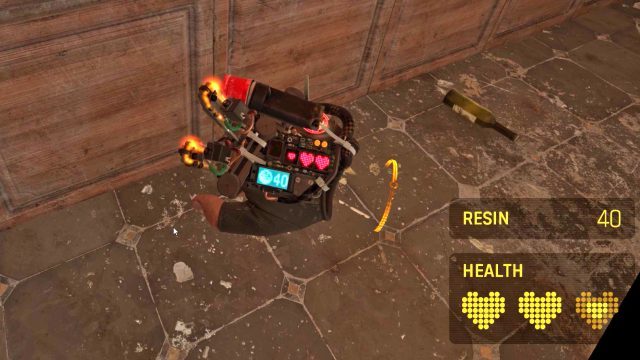 And Valve went further than just adding an interface for spectators, they also added built-in camera smoothing, zoom levels, and even a selector to pick which eye the camera will look through.
And Valve went further than just adding an interface for spectators, they also added built-in camera smoothing, zoom levels, and even a selector to pick which eye the camera will look through.
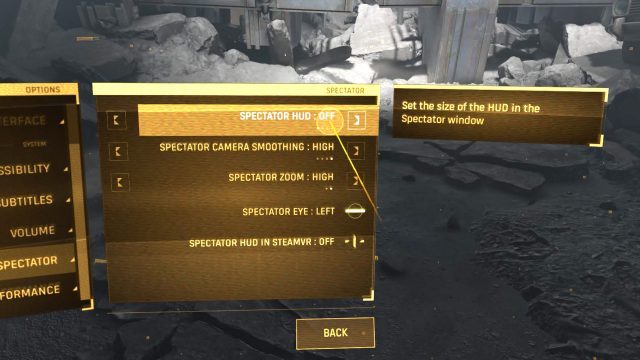 The last one might seem like a minor detail, but because people are either left or right-eye dominant, being able to choose your dominant eye means the spectator will correctly see what you’re aiming at when you’re aiming down the scope of a gun.
The last one might seem like a minor detail, but because people are either left or right-eye dominant, being able to choose your dominant eye means the spectator will correctly see what you’re aiming at when you’re aiming down the scope of a gun.
While we’re looking at the menus here, it’s also worth noting that the game menu is primarily designed for laser pointer interaction, but it also works like a touchscreen.
While this seems maybe trivial today, let’s remember that Alyx was released almost four years ago(!). The foresight to offer both modalities means that no matter if the player’s first instinct is to touch the menu or use the laser, both choices are equally correct.
All key items in Alyx have subtle lights on them to draw your attention. This is basic game design stuff, but I have to say that Alyx’s approach is much less immersion breaking than many VR games where key objects are highlighted in a glaringly obvious yellow mesh.
For the pistol magazine, the game makes it clear even at a distance how many bullets are in the magazine… in fact, it does this in two different ways.
First, every bullet has a small light on it which lets you see from the side of the magazine roughly how full it is.
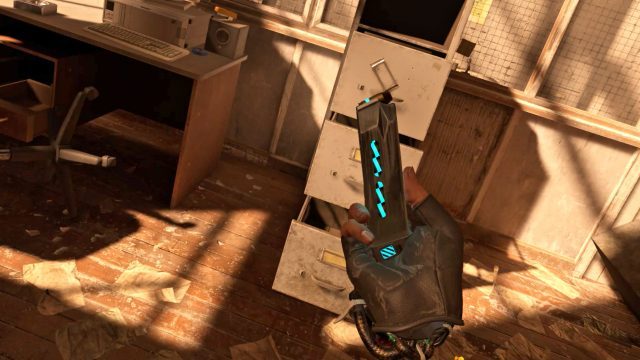 And then on the bottom of the magazine there’s a radial indicator that depletes as the ammo runs down.
And then on the bottom of the magazine there’s a radial indicator that depletes as the ammo runs down.
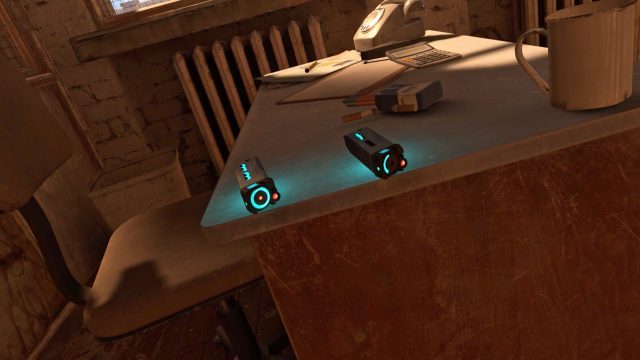 Because this is all done with light, if the magazine is half full, it will be half as bright—making it easy for players to tell just how ‘valuable’ the magazine is with just a glance, even at a distance. Completely empty magazines emit no light so you don’t mistake them for something useful. Many players learn this affordance quickly, even without thinking much about it.
Because this is all done with light, if the magazine is half full, it will be half as bright—making it easy for players to tell just how ‘valuable’ the magazine is with just a glance, even at a distance. Completely empty magazines emit no light so you don’t mistake them for something useful. Many players learn this affordance quickly, even without thinking much about it.
The takeaway here is that a game’s most commonly used items—the things players will interact with the most—should be the things that are most thoughtfully designed. Players will collect and reload literally hundreds of magazines throughout the game, so spending time to add these subtle details meaningfully improves the entire experience.
The post VR Design Unpacked: The Details That Make ‘Half-Life: Alyx’ a Masterpiece appeared first on Road to VR.
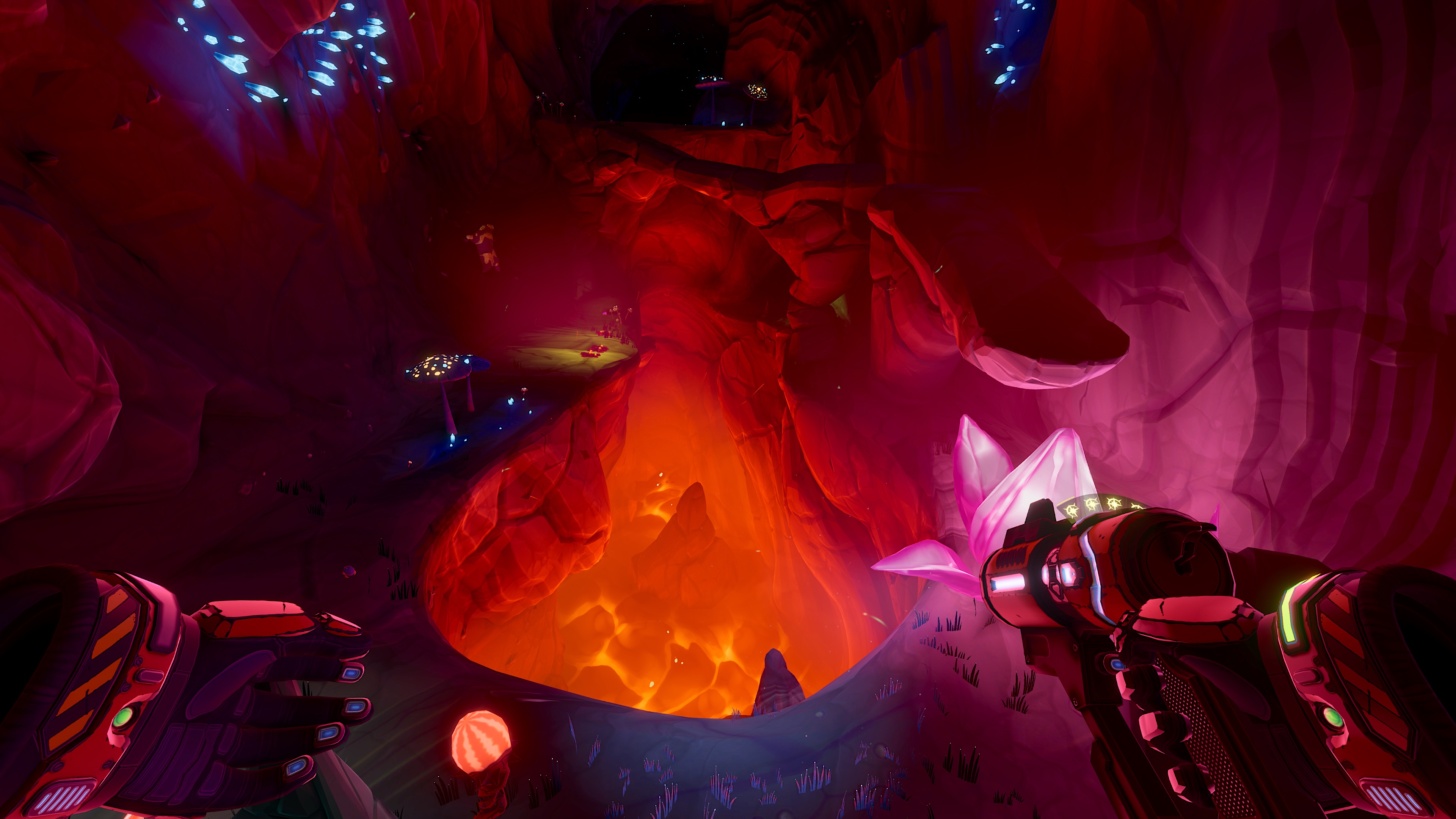
The end of the week brings with it a flood of gaming news. Here’s a roundup.
The post Into Black is coming to PSVR 2 and more VR news appeared first on MIXED Reality News.
In a keynote on the final day of SCALE 22x, Denver
Gingerich said that he wanted to talk “a little bit about a router and
“. Gingerich is the director of
also the big picture around that router
compliance at the Software Freedom
Conservancy (SFC), which is the organization behind the OpenWrt One router that
LWN looked at back in November. The
router is, of course, based on firmware from the
OpenWrt project, which got its
start because of GPL-enforcement activities and is a member project at the SFC.
Industry Nine’s Hydra Classic mountain bike hubs are currently discounted to £327 at BikeTart – a 50 per cent saving on their RRP of £660.
While the updated Hydra 2 hubs were released earlier this month, the first-generation model is still a high-level performer at the heart of any wheelset, especially with the savings on offer.
We tested the hubs alongside Reserve’s 30 rims and were impressed by their quick engagement thanks to a 0.52-degree freehub engagement angle.
SQUIRREL_13200547
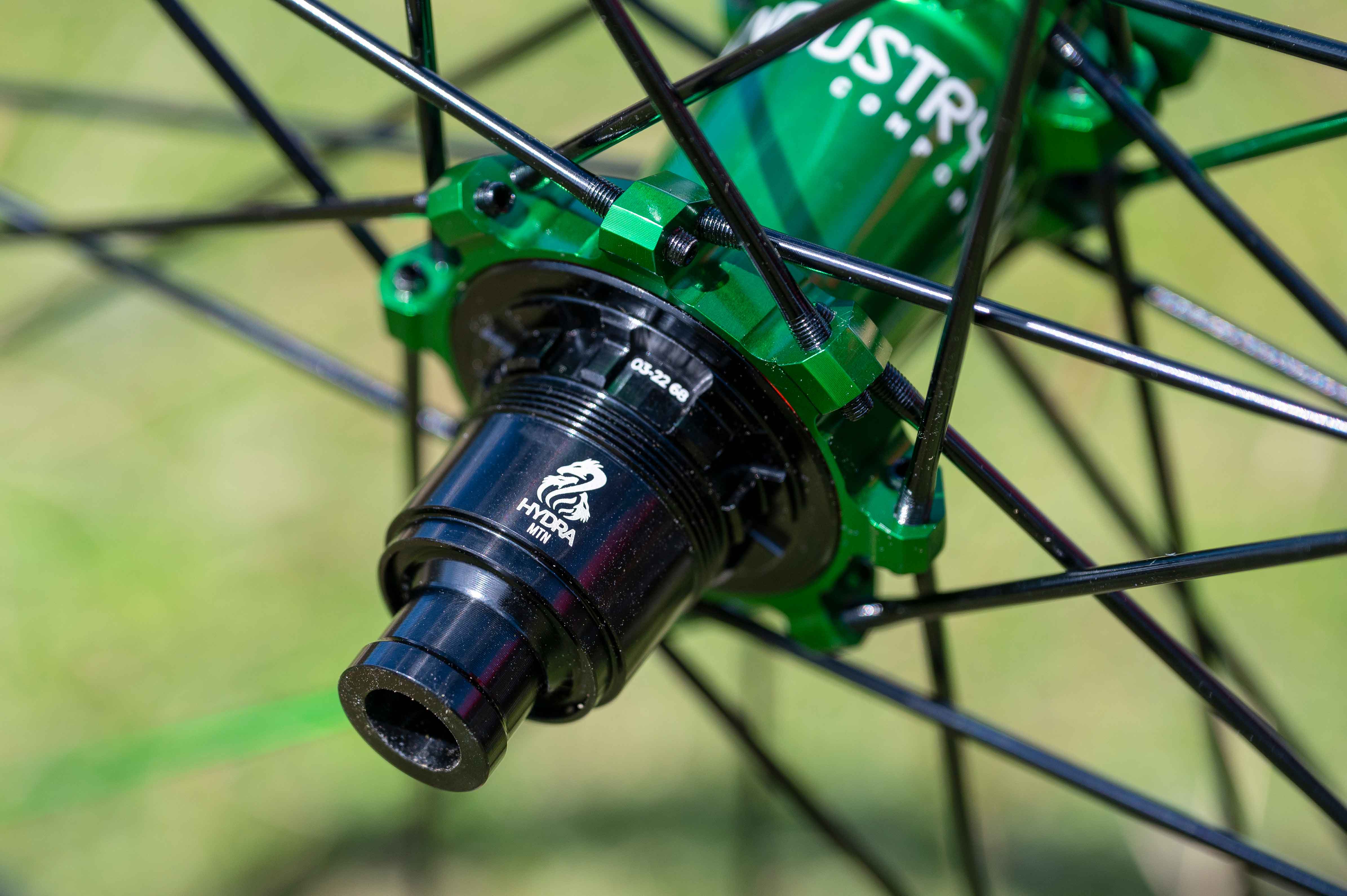
As mentioned, these are the first-generation hubs made in Industry Nine’s North Carolina machine shop.
They feature a milled construction from 7075-T6 aluminium and are anodised in-house, with Industry Nine offering a large array of colours.
The front hub weighs in at 165g, while the rear is reasonably light at 289g.
Shimano and SRAM-free bodies are available, with Boost and non-Boost options available in the deal.
There is also the option of six-bolt or Center Lock rotors, depending on your preference.
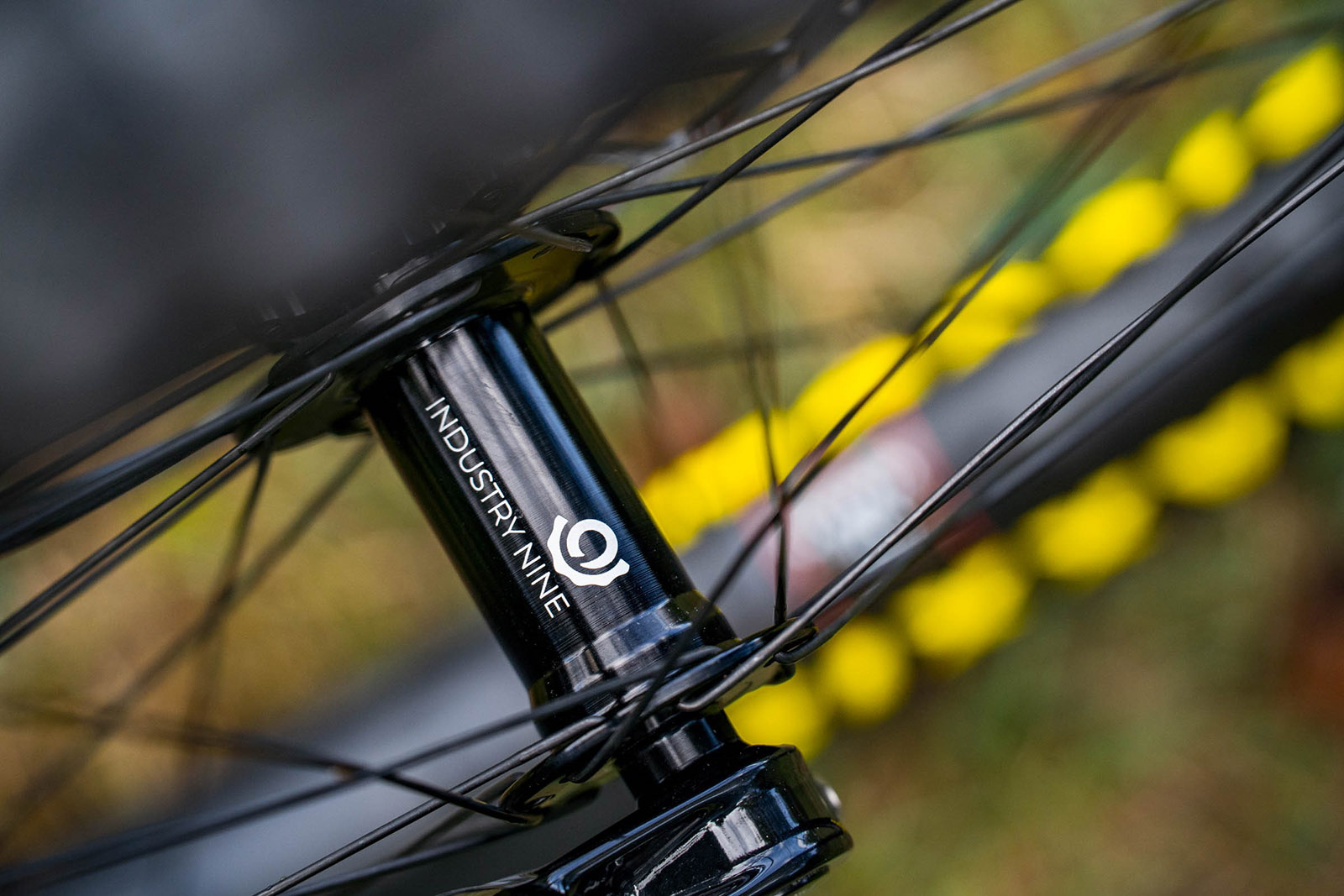
If you like loud hubs, the I9 Hydra should be on your radar, with the ludicrous engagement angle resulting in a high-pitched buzz as you freewheel.
The hubs are home-mechanic friendly and can be serviced without any proprietary tools.
Despite not being the latest model, Industry Nine backs the Hydra hubs with a two-year warranty.
SQUIRREL_13200547

Google’s Pixel 9a, a candidate to be the “midrange smartphone king,” was announced last week but delayed at the last second due to a component problem. Today, we finally know when the handset will arrive: April 10 in North America.
In an update to a Pixel 9a support page (via 9to5Google) on Friday, Google wrote that the phone will arrive on April 10 in the US, Canada and the UK. On April 14, it will land in a long list of European countries: Germany, Spain, Italy, Ireland, France, Norway, Denmark, Sweden, Netherlands, Belgium, Austria, Portugal, Switzerland, Poland, Czechia, Romania, Hungary, Slovenia, Slovakia, Lithuania, Estonia, Latvia and Finland. Meanwhile, Australia, India, Singapore, Taiwan and Malaysia have to wait until April 16.
Pre-announcement reports suggested the phone would arrive on March 26, but Google said on the day of its unveiling that it was delayed into April. An unverified leak hinted that the pushback was related to camera-related heating problems, but Google only said it was to address a “component quality issue that’s affecting a small number of Pixel 9a devices.” Regardless of the specifics, at least the problem ultimately only amounted to a short delay.
The Pixel 9a has dual cameras, a Tensor G4 chip and AI tools like Magic Editor, Magic Eraser, Best Take and Photo Unblur. (However, an Ars Technica report suggests it runs an “extra extra small” version of Gemini.) In his hands-on, Engadget’s Sam Rutherford found the midrange phone to offer compelling features and performance relative to its $499 and up pricing. The phone isn’t yet available for pre-order.
This article originally appeared on Engadget at https://www.engadget.com/mobile/smartphones/the-pixel-9a-launches-on-april-10-in-the-us-161940732.html?src=rss
Jennifer Salke is stepping down as the head of Amazon MGM Studios, according to reporting by Deadline. She’s been at the post for over seven years, which is a ripe old age for a studio head. Before Amazon, Salke was president of NBC Entertainment.
She will not be replaced. Instead, the head of studio role will be eliminated as part of a new structure for the division. Prime Video honcho Mike Hopkins said in a memo that the company “decided to flatten our leadership structure a bit.” The studio will split into two distinct arms, with one focusing on TV and the other handling films.
“We will be taking a couple of weeks to have thoughtful conversations with Jen’s directs and others to finalize the ideal long-term structure for the Amazon MGM Studios organization as a whole, and we’ll have more to share on that work soon,” Hopkins said.
Salke isn’t leaving the studio entirely. She’s transitioning to a first-look film and TV deal with the company. However, industry rumors suggest that it’s more like a firing than a voluntary career change. She was largely absent from the deals that brought in Amy Pascal and David Heyman as the producers of the next James Bond film.
Barbara Broccoli and Michael G. Wilson sold creative control of 007 to Amazon for around $1 billion earlier this year. Insiders have suggested that Broccoli and Salke didn’t get along, which Jeff Bezos allegedly caught wind of. It has been reported that one condition of Pascal and Heyman signing on was that the pair would not report to Salke.
We don’t know what any of this means for James Bond, other than new movies are most definitely coming. It’s also been suggested that the platform could be prepping an affiliated TV show.
This article originally appeared on Engadget at https://www.engadget.com/entertainment/tv-movies/jennifer-salke-steps-down-as-head-of-amazon-mgm-studios-161856700.html?src=rss
An anonymous reader shares a report: Staff at the Federal Trade Commission have been instructed to no longer refer to the agency as “independent” in complaints, according to an email obtained by The Verge.
Read more of this story at Slashdot.